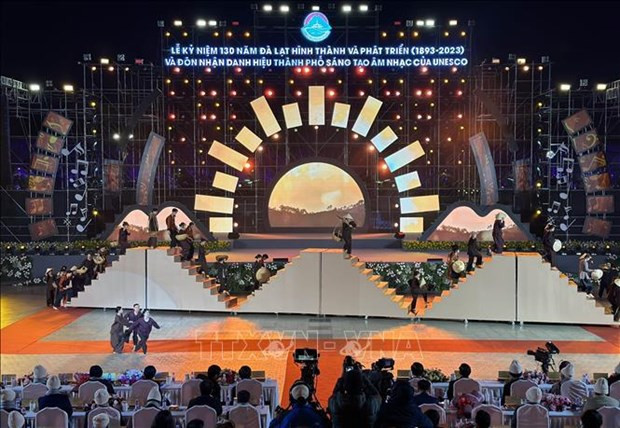
In his address, Deputy Prime Minister Le Minh Khai urged Da Lat city to pursue a development strategy in accordance with development orientations of the Central Highlands region, aligning with both regional and provincial master plans for the 2021-2030 period, with a vision to2050.
He reiterated the determination to build Da Lat into a hub of the southern Central Highlands, making it a pivotal development centre in the region and the country as a whole, and a crucial link to the region and the world.
The city must actively engage and effectively leverage its role as a member of the UNESCO Creative Cities Network, thereby substantially increasing the cultural industry's robust contributions to the local economy, Khai said.
At the ceremony, a representative of UNESCO in Vietnam presented a letter recognising Da Lat's official accession to the UNESCO Creative Cities Network to the city's leaders.
The event entertained the audience in an epic narrative told through music, dance, and art performances, with the resonant echoes of gongs recounting the 130-year journey of Da Lat's formation and development.
The origin of Da Lat, once a pristine land inhabited by the K’Ho Lach ethnic group, could be traced back to the moment when explorer and physician Alexandre Yersin discovered it and proposed to the Indochina Governor-General the construction of the Lang Biang Plateau as a resort hub of Indochina.
Over the course of 130 years, with ups and downs, Da Lat has evolved into a renowned tourism city, often described as the "city in the forest, forest in the city," and the "Vietnam Flower Festival City”.
The city has earned accolades as the "ASEAN Clean Tourism City" twice and stands as one of the most romantic destinations in Asia. Beyond its allure as a tourist hotspot, Da Lat also stands at the forefront of the country's high-tech agricultural production./VNA